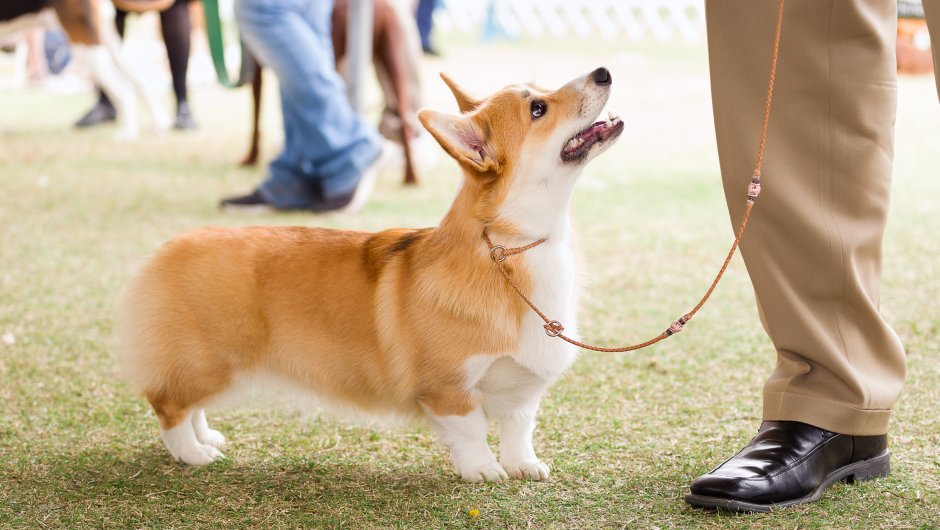Don’t let training go to… well, the dogs!
August is an appropriate time to discuss going back to school or, in the case of pets, revisiting their training. Well-trained pets are generally considered more a part of the family than pets with behavioral problems. In fact, it is a sad statistic that the majority of pets that are dropped off at humane societies nationwide are abandoned because of bad behavior. What is even more disheartening is the fact that pets can easily learn good manners with just a little practice and consistency in their dog training from their owners. The old saying, “You can’t teach an old dog new tricks,” absolutely not true!
Dog training the positive way!
I am a firm believer in positive motivational training. This means rewarding a pet when he or she does something good or performs a task correctly. Furthermore, it means ignoring them or withholding your attention when they do not do what is correct. Our pets love us and crave attention. Because they want to please us and get treats, they respond much more quickly to positive reinforcement than to fear and negative training. Evan an aloof cat can be trained using rewards for proper learned behavior. How do you think they get animal actors to perform on cue? The first four months of a pet’s life are when they are the most impressionable. Unfortunately, it is also when they are the cutest and that leads pet owners to be “soft” and make bad decisions regarding behavioral training.
Puppy training can be tough, but it is one of the building blocks of your relationship!
A young puppy can be house trained very quickly if the owners are strict in the use of a crate whenever they are not interacting with the puppy or cannot keep an eye on the pet. If new pet owners think it is mean to put the puppy in a crate, they are setting the puppy up to fail, because it will eliminate whenever the urge strikes. The more that a pet has such “accidents” in the house, the more it seems like this is normal and acceptable behavior.
I hesitate to use the word “accident” because elimination is normal. It is just up to the pet owner to put the puppy in a position to succeed by taking the puppy outside often and offering lavish praise when it goes outside. If you catch a puppy “in the act” inside the house, you can say “NO” in a loud voice, which is a negative correction. But, if it is even a second after he has gone, you should not say anything: his attention span is so short, he will not understand, and you will only confuse and scare your pet, which hurts the bonding process.
Don’t be negative with dog training.
Negative corrections should be used very sparingly. It is best to not let the puppy get in any situation that will make it necessary to respond in a negative way. Using a small crate whenever you cannot directly observe a puppy will encourage him to hold it in until taken outside. It is similar to using a crib or playpen with a new baby to prevent injury when you cannot watch the infant. No one would take a diaper off of a baby and let it crawl around their house unattended, and you should not do the same thing with a puppy.
Consistency is key!
Another common mistake many new pet owners make is to stand over the crate and talk to the puppy. That only makes the puppy want to be outside the crate with you. The best thing to do is to put a treat in the crate with the puppy and turn around and walk away without saying a word. Then the puppy accepts that as normal. There may be some crying at first, but much like a young child in a crib, puppies have to learn that you will not come when they cry. If you do go back to the crate, the puppy has learned that all it has to do is cry and you will come. Then the next time he is put in the crate, he will cry much louder and louder.
All members of the family need to be consistent when training a pet of any age. Otherwise you are sending mixed messages that confuse the pet and lead to what we consider bad behavior. The principles of positive motivation dog training and being consistent apply to pets of all ages.
Repeat and repeat and repeat!
The reason I titled this article, “Back to School” was to emphasize the idea that we need to continually reinforce training with our pets. We do this by continuing to always reward and praise good behavior and by never letting bad behavior go unnoticed. Allowing a bad behavior actually teaches your pet that it is okay to act that way. Continually praising good behavior strengthens the bond between you and your pet, which makes life with a pet such a wonderful thing. Keep up the training and continue to reinforce good behavior, and not only will you have a great pet, but you will be the envy of all your pet-owning friends.

